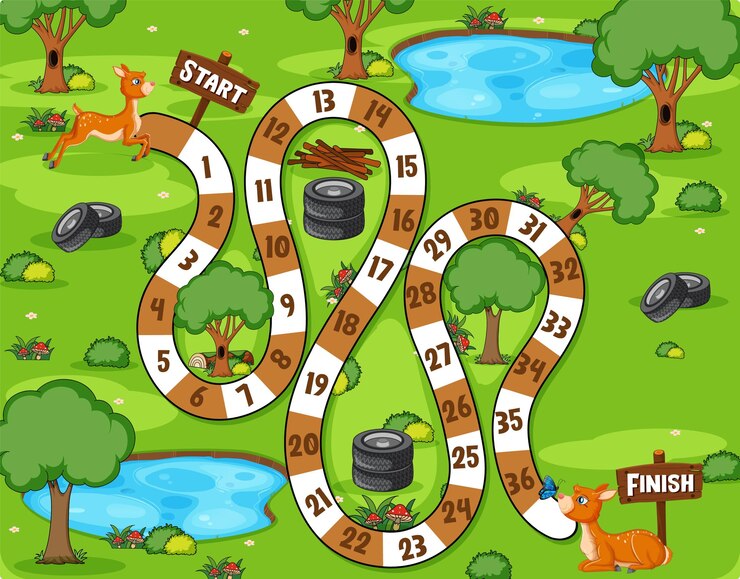How to Create Your Own Board Game: A Comprehensive Guide for Beginners 2024

Creating a board game can be a rewarding and creative endeavor. Whether you’re a seasoned game designer or a passionate novice, this guide will take you through each step of the process, from brainstorming ideas to playtesting your final product. By the end, you’ll have the tools and knowledge to create a unique board game that can entertain friends and family or even lead to a successful launch in the gaming market.
Step 1: Conceptualize Your Game Idea
The first step in creating your board game is to come up with a compelling idea. This is where your creativity can run wild. Consider the following aspects to help you formulate your concept:
1.1. Define the Theme
The theme is the backbone of your game. It sets the tone and immerses players in a specific experience. Here are some popular themes to consider:
- Fantasy: Think magical creatures, epic quests, or mythical realms.
- Historical: Focus on a specific era, like ancient Rome or the Wild West.
- Mystery: Involve players in solving a crime or uncovering secrets.
- Strategy: Encourage tactical decision-making through resource management or conquest.
1.2. Identify the Target Audience
Understanding your audience will help you tailor the game’s complexity and themes. Are you designing for families, casual gamers, or hardcore enthusiasts? Each group has different preferences that can guide your design choices.
1.3. Brainstorm Mechanics
Game mechanics are the rules and systems that dictate how players interact with the game. Think about the following:
- Game Type: Will it be competitive, cooperative, or solo?
- Player Interaction: How will players influence each other? Will they trade, collaborate, or compete directly?
- Winning Conditions: What does it take to win? Is it about accumulating points, completing objectives, or outlasting opponents?
Step 2: Outline Your Game Structure
Once you have a clear idea, outline the structure of your game. This helps organize your thoughts and ensures all components work together harmoniously.
2.1. Create a Game Flow Chart
A flow chart can visually represent how the game progresses. Break it down into phases such as setup, turns, and endgame. This will help identify any potential issues with pacing or player engagement.
2.2. Define Components
List all the components needed for your game. Common elements include:
- Game Board: The central area where players will move and interact.
- Cards: Used for events, actions, or items that players can draw.
- Tokens: Represent players, resources, or objectives.
- Dice: Introduce chance and randomness to the game.
2.3. Write a Rulebook
A clear and concise rulebook is essential for guiding players. Start with a brief overview of the game, followed by setup instructions, gameplay mechanics, and winning conditions. Consider including examples and diagrams to clarify complex rules.
Step 3: Prototype Your Game
Now that you have your structure in place, it’s time to create a prototype. This doesn’t have to be perfect; the goal is to test the gameplay mechanics and flow.
3.1. Gather Materials
Use readily available materials to construct your prototype. Cardboard, paper, markers, and household items can be transformed into game components. Websites like The Game Crafter can also help you create custom pieces if needed.
3.2. Build the Game Board and Pieces
Create your game board and pieces based on your outline. Ensure they are functional, even if they lack polish. Focus on clarity and usability during this phase.
3.3. Playtest Internally
Before inviting others to playtest, gather a small group of friends or family to test the game internally. Pay attention to:
- Gameplay Flow: Is it smooth? Are there any confusing rules?
- Engagement: Do players remain interested throughout the game?
- Balance: Are any elements too powerful or weak?

Step 4: Refine Your Game Through Playtesting
Playtesting is crucial for refining your game. Once you have made internal adjustments, it’s time to share your game with a broader audience.
4.1. Organize Playtesting Sessions
Host multiple playtesting sessions with different groups. This will provide diverse feedback and perspectives. Aim for players with varying experience levels to get comprehensive insights.
4.2. Gather Feedback
After each session, gather feedback through discussions or surveys. Ask players about:
- Enjoyment: Did they have fun? What did they like or dislike?
- Clarity of Rules: Were the rules easy to understand?
- Game Length: Did the game feel too long or too short?
4.3. Make Necessary Adjustments
Based on the feedback, adjust your game mechanics, rules, or components as needed. This iterative process may require several rounds of playtesting before you find the right balance.
Step 5: Finalize Your Game Design
With refined mechanics and gameplay, it’s time to finalize your design.
5.1. Polish the Components
Once you’re satisfied with the gameplay, invest time in designing aesthetically pleasing components. Consider the following:
- Artwork: Hire a graphic designer or use design software to create engaging visuals for your board, cards, and tokens.
- Material Quality: Decide on the type of materials for your final product. Consider durability and cost.
5.2. Create a Professional Rulebook
Revise your rulebook to ensure it’s polished and professional. Use clear language, bullet points, and visuals to enhance understanding. Consider including FAQs to address common player questions.
5.3. Prototype Again
Create a new prototype with your finalized components. This version should closely resemble what the final product will look like. Use this prototype for one last round of playtesting to catch any final issues.
Step 6: Explore Manufacturing Options
If you’re looking to produce your board game for sale, explore manufacturing options.
6.1. Research Manufacturers
Look for board game manufacturers that specialize in small to medium-sized productions. Some popular options include:
- The Game Crafter: Ideal for small runs and prototypes.
- Panda Game Manufacturing: Suitable for larger productions with a variety of options.
- Print & Play Games: Offers both printing and fulfillment services.
6.2. Request Quotes
Reach out to multiple manufacturers for quotes based on your specifications. Consider factors like cost, production time, and shipping. This will help you find the best fit for your project.
6.3. Review Contracts and Terms
Carefully review any contracts or agreements before committing. Pay attention to intellectual property rights, production timelines, and quality assurance processes.
Step 7: Prepare for Launch
With your game ready for production, start preparing for your launch.
7.1. Develop a Marketing Strategy
Create a marketing plan to build anticipation for your game. Consider the following strategies:
- Social Media Presence: Build a following on platforms like Instagram, Twitter, and Facebook. Share behind-the-scenes content, artwork, and gameplay videos.
- Game Conventions: Attend gaming conventions to showcase your game. Networking at events like Gen Con or Essen Spiel can help generate buzz.
- Create a Website: Develop a dedicated website for your game, providing information, updates, and a way for potential customers to pre-order.
7.2. Engage with Your Audience
As you build your marketing strategy, engage with your audience regularly. Use polls, Q&A sessions, and sneak peeks to keep them excited and invested in your project.
7.3. Plan for Pre-Orders or Crowdfunding
If you need funding for production, consider running a crowdfunding campaign on platforms like Kickstarter or Indiegogo. Create a compelling campaign that outlines your game’s unique features and offers enticing rewards for backers.
Step 8: Launch Your Board Game
Finally, it’s time to launch your game!
8.1. Monitor Sales and Feedback
After launching, closely monitor sales and gather feedback from players. Encourage reviews and testimonials to build credibility and visibility.
8.2. Provide Excellent Customer Service
Maintain a strong relationship with your customers by providing excellent support. Address any questions, concerns, or issues promptly to foster loyalty.
8.3. Plan for Future Expansions
As your game gains traction, consider developing expansions or additional content. This can keep players engaged and bring new life to your game.
Conclusion
Creating a board game is a challenging but immensely satisfying journey. By following these steps, you can take your idea from concept to completion, resulting in a unique game that brings joy to players. Remember, the key to success is dedication and a willingness to iterate based on feedback. Embrace the process, enjoy the creativity, and most importantly, have fun bringing your board game to life!
With persistence and passion, you could not only create a game that entertains but also leave a lasting mark in the board game community. Happy designing!







